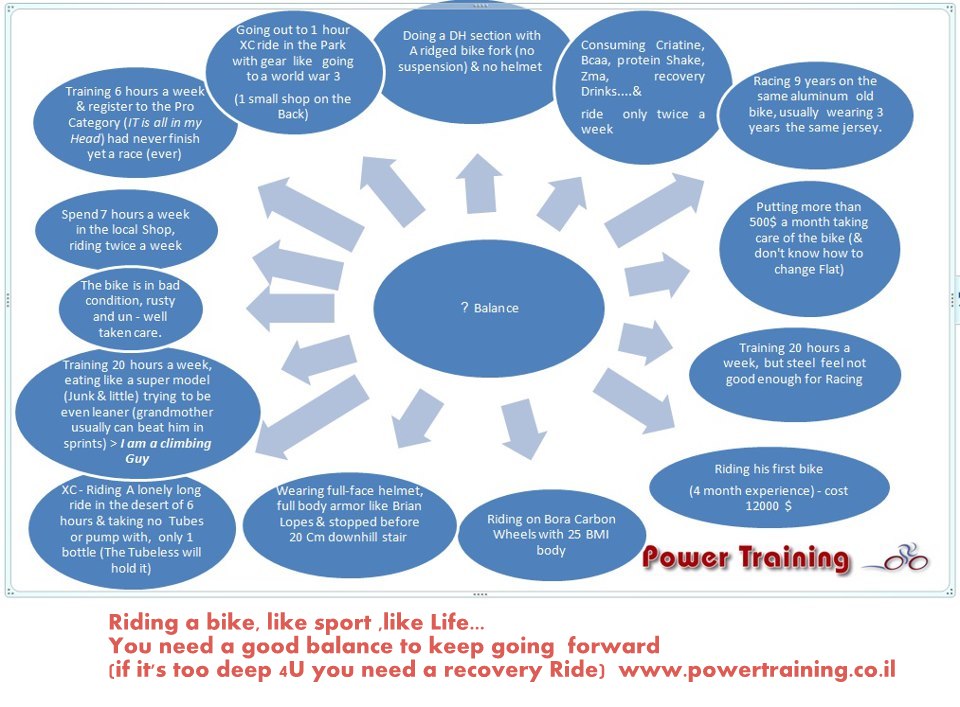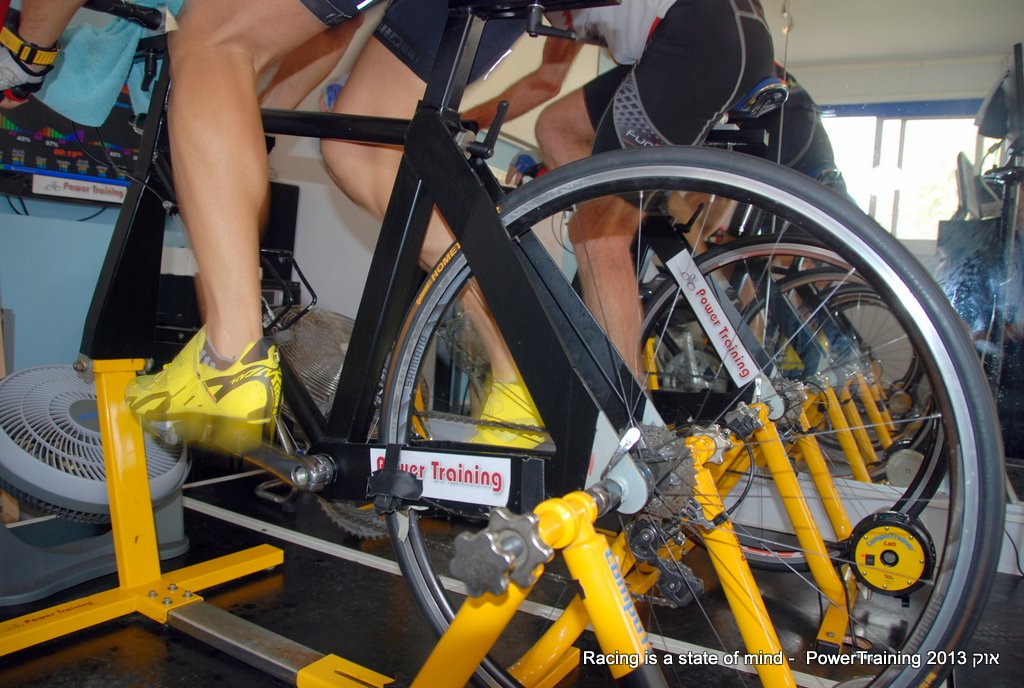(If it’s ant’s simple, it simply will not happen)
by Elad Faltin on Saturday, February 4, 2012 at 9:34pm·
During today’s morning session, one of my Clients asked me: “How come the SpinScan indicates that my left leg is weaker on one occasion, but that my right leg is weaker on another occasion? Is it really accurate?”
I believe this is one of the most important questions that have been brought up in the lab recently.
One of the most important principles of PowerTraining is Symmetry.
This involves muscle symmetry and muscle movement coordination symmetry (recruitment of motor units).
As already pointed out elsewhere, the Computrainer system can analyze the muscles balance and Efficiency.
The leg muscles are not well balanced for this action since the ratio between flexors and extensors (i.e. hamstrings vs. quadriceps) is greatly in favor of the latter. Since we are not born with maximal pedaling efficiency it is something that we need to learn. We need to find that way to pull the pedals towards us (while using the hamstrings) and to push the pedals away from us (while using the quads) with maximum efficiency and speed.
Now, most cyclists are well familiar with the idea of a ‘round’ pedal stroke. However, many of them do not develop a full understanding of it since they tend to forget that when we ride, we change the riding rhythm in response to the change of the terrain – climbing, flat or downhill.
“The SpinScan number is defined as: Average Torque divided by Maximum Torque multiplied by 100. The SpinScan graphs represent torque output throughout the pedal stroke. The more efficiently you use your leg muscles to “pedal in circles”, the higher the SpinScan values will become and the flatter (bargraph) or rounder (polar) the SpinScan Torque Profile will become. If your legs could generate work like an electric motor, the graphs would be perfectly flat or round and the SpinScan values would be 100%. But, of course, we are not electric motors, so we can’t achieve 100% perfection – and it would be silly to think we could.”
(Computrainer – to read more – here)
So, after understanding what the SpinScan does, how does it happen that sometimes we seem to be more efficient with our right leg, and sometimes with our left leg ?
It is simple. (If it’s ant’s simple, it simply will not happen) The human body is not made for turning pedals (we are not born to be cyclists, even Lance Armstrong).
Riding in the flat, for example, is all about Speed. What do we mean by that? Well, if a rider in the flat tries to maintain a 300 watt output while turning the pedals at 80 rpm for 20 minutes, and then is asked to continue riding at exactly at the same speed he managed to achieve by doing that for 10 minutes more, he will probably be unable to do so. His muscles will be just too tired. However, had the same rider maintained the same power output while turning the pedals at 100 rpm he would have tired less.
Therefore, in the flat the goal is to properly recruit the muscles so as to produce high power at high cadence (and thus achieve high speed). Let us call this action motor unit recruitment X and check the SpinScan reading of a particular rider.
It is possible that at this state X (0 degree slope, high speed at 100 rpm) that certain rider has a weak muscle (i.e. the right hamstring) , that prevents him from achieving and maintaining maximal pedaling efficiency. At state X the SpinScan will indicate that the rider’s right leg is weaker. However, when that same rider starts riding uphill and lowers his rpm, it is quite possible that the muscle showing weakness in the flat will function normally while on the ascent. It may very well be, that at this riding rhythm (let us call it state Y), the rider’s left leg is weaker and the spiscan will change its reading accordingly.
This, of course, is merely the beginning. What about standing pedaling ?The use of explosive strength?
The minute we change the riding rhythm the muscles function (or should function) a bit differently in order to efficiently achieve maximal power transfer from the legs to the pedals.
Efficiency, that is the name of the game.
And don’t forget, if it isn’t simple, it simply will not happen.
Elad Faltin – Cycling Running & Triathlon
Elad.bike@gmail.com
Power is useless without Control
Optimal rpm- does it exist?
Pedal stroke analyzer (Racemate)
http://www.racermateinc.com/spinscan.asp




